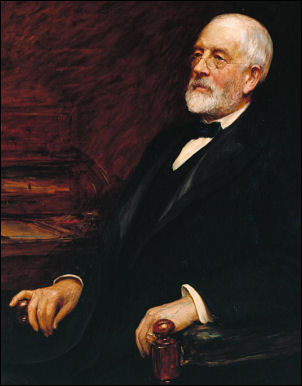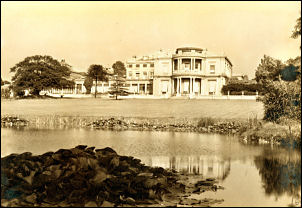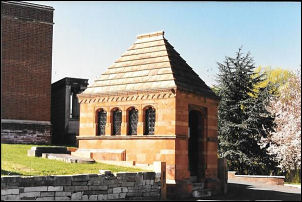|
Tue 09 Oct 2018
Doreen Jolly -
Sir Henry Tate. |
|
Doreen started her story with an introduction to the Chorley
Unitarian Chapel, the second oldest Church in Chorley opened in
1725. The Father of Henry Tate (1819-1899) was Rev William Tate
(1773-1836) who was born in Newcastle upon Tyne. He was Wesleyan
Methodist and decided to become a minister. He worked in Hebden
bridge and married Agnes Booth in 1797. William could write but
Agnes couldn’t. Chorley Unitarian people had heard about William
Tate and approached William to come to Chorley but William said
“I do not see the finger of providence pointing in the direction
of Chorley”. The wealthy Crompton family funded the Chapel and
asked William if he could suggest a figure of money that may
point the finger of providence towards Chorley maybe we could
come to some agreement. A figure was agreed and William and
Agnes move to Chorley from being Minister at Dukinfield in 1799.
They lived on Terrace Mount opposite the Chorley Parish Church
of St Laurence. In June 1799 they had first of 12 children. 8
survived. |

Doreen |
|
They soon had to move as Park Road was being widened so they
took up residence in Water Street at no12 where the Council Car
Park is now. They were only there 2 or 3 years. The Cromptons
paid for the building of the current Ministers House for the
Tates when Henry was about 5years old. William was also a
teacher and educated Henry with other children. When Henry was
13 he moved to an apprenticeship with his older brother Caleb in
Liverpool. After a 7 years an apprentice he soon got his first
shop and married Jane Wignall and had 10 children, 1 died. His
business expanded to 6 shops. He decided to start buying in bulk
to get better prices and increase profits. He decided to go into
sugar refining and also decided to try and be a City Councillor
and was successful for the Lime Street area. He only stood one
term as he wasn’t happy with meetings etc. He went into
partnership with John Wright, a sugar refiner of Manesty Lane in
Liverpool in 1859. |

Sir Henry Tate
|
|

Where henry Tate was born |

Water Street, Chorley, Henry's 2nd home
|
|

Henry's last home in Chorley |

Chorley Unitarian Chapel and
grave of Rev William Tate |
Henry Tate sold his grocery business
in 1861 to concentrate on the sugar business. He built his own
sugar refinery at Earle Street in 1862. When Wright died Henry
bought out his share of the business and brought in two of his
sons, Alfred and Edwin and re-named the business Henry Tate &
Sons. At the time sugar refining was big business with 74
refineries in the UK but also there was a sugar tax which was
soon dropped. The consumption of sugar quadruples. Henry
expanded by building a new refinery on Love Lane Liverpool. He
started by using the Greenock sugar refining machinery. He soon
changed to a more efficient method introduced in France by Bovin
and Loiseau. He bought the rights.
In 1874–5 he bought a derelict
shipyard on the Thames at Silvertown. It was to be the site of
his largest refinery, which began operating in 1878 under the
control of his son, Edwin. Tate bought the British rights to
Eugen Langen’s sugar cube manufacturing process in 1875.
Previously sugar had been sold in large cones and servings had
to be broken off with a hammer and was inefficient. Pre-packaged
“Tate’s Cube Sugar” was soon a great success. |
|

Grave slab of Rev William Tate |

Rev William Tate
|

Plaque to Sir Henry Tate which is wrong about Tate & Lyle |
|
Abram Lyle (1820–1891) is noted for founding the sugar refiners
Abram Lyle & Sons and had a similar career path to Henry Tate
and he also set up a sugar refinery in London. Lyle however was
more famous for manufacturing Lyles Golden Syrup.
An
unwritten agreement was that Henry Tate would produce sugar
cubes and Abram Lyle would produce syrup.
In 1921, after
Tate's death, Henry Tate & Sons merged with Abram Lyle & Sons to
form Tate & Lyle.
Henry built an Institute near his
refinery for his workers but doesn’t mix with his staff.
1883
cheaper sugar from sugar beet comes in from Europe. |

Abram Lyle (1820 - 1891) |
|
Henry and his wife Jane lived at Park Hill Mansions, Streatham
but hadn’t been there long when Jane died. Within 18months Henry
had re-married. His new wife was Amy Hislop 30 years his junior.
Henry wanted to make museums, libraries, scholarships etc
available to all. He paid for libraries to be built at Brixton,
Streatham and South Lambert and a large library at Liverpool
University. In 1896 retired from the business completely and
leaves running in the hands of his sons. In 1899 he donated
funds to help Herbert Parke build and equip Chorley Library. On
Sunday afternoons he opened his private art gallery at Park Hill
Mansions to the public. |
|

Park
Hill Mansions, Streatham |

Mausoleum in West Norwood Cemeterye |
|
|
|

Tate Britain, Millbank, London. |

Tate Britain, Millbank, London. |
He built the National Gallery of
British Art where Millbank Prison used to be. It opened in 1897
and was called the National Gallery of British Art. Then from
1932 to 2000 it was known as the Tate Gallery and thereafter
Tate Britain. He donated 65 paintings and 6 sculptures. Others
donated as well. Henry said the gallery was a thank you to the
nation for his prosperous business ventures over 60 years. In
June 1898 he accepts a knighthood. On 5th Dec 1899 Henry died
aged 80. His body lies in a mausoleum in West Norwood Cemetery.
The Blue Plaque to Henry Tate by the
Unitrian Chapel says Henry Tate founded Tate & Lyle which is
incorrect.
The Tate family donated money for the
Chorley Unitarian Chapel’s organ and gravestone for William
Tate. The Silvertown Refinery in London is still operating but
sold 2010 to American Sugarholdings. |

Tate Britain, Millbank, London. |
.